An Integrated Framework for Implementing Safety-I and Safety-II Principles in Aviation Safety Management
Abstract
1. Introduction
1.1. Research Background
1.2. Research Objectives
1.3. Research Process
2. Literature Review
2.1. Safety Management Paradigm Evolution and Integration Challenges
2.2. Organizational Factors in Aviation Safety
2.3. Implementation Gaps and Research Needs
3. Theoretical Framework and Research Methodology
3.1. Theoretical Framework
3.1.1. Integration Logic of HEAR-LPAC-PAM Frameworks
3.1.2. HEAR Framework: Safety-I Organizational Analysis
3.1.3. LPAC Model: Safety-II Behavioral Implementation
3.1.4. PAM Framework: Integration Coordination
3.1.5. Framework Integration Effectiveness and Validation
3.2. Research Methodology
3.2.1. Philosophical Position and Research Paradigm
3.2.2. Qualitative Research Design
3.2.3. Sampling Strategy and Case Selection
3.2.4. Data Collection and Sources
3.2.5. Data Analysis Procedures
3.2.6. Trustworthiness and Rigor
3.2.7. Researcher Reflexivity
4. Analysis of Failure Cases and Safety Management Behavior Through Safety-I Methodology
4.1. Case Analysis and Reconstruction
4.1.1. Path and Altitude Deviation Due to Inappropriate Use of FMS Functions
4.1.2. Crew Injury Due to In-Flight Turbulence
4.1.3. Approach Abort Due to Aircraft High Energy During Instrument Approach
4.2. Comprehensive Analysis Results
4.2.1. Contributing Factor Analysis
4.2.2. Safety Management Behavior Evaluation
4.3. Cross-Case Pattern Analysis
4.4. Implementation Gap Assessment
5. Development of Flight Crew’s Resilient Behavior Framework
5.1. Definition of Resilient Behavior
5.2. Theoretical Basis of Resilient Behavior
5.3. Case-Specific Resilient Behavior Enhancement Methods
5.3.1. FMS Operation Resilient Behavior
5.3.2. Turbulence Response Resilient Behavior
5.3.3. Energy Management Resilient Behavior
5.4. Integration with Organizational Improvements
6. Integrated Application of Safety-I and Safety-II
6.1. Integrated Application Framework
6.1.1. Case-Specific Integrated Implementation
6.1.2. Coordinated Paradigm Application
6.2. Effectiveness Evaluation
6.2.1. Quantitative Analysis Results
6.2.2. Visual Analysis Through Why–Because Tree Comparison
6.2.3. Implementation Gap Reduction Evidence
6.3. Implementation Guidelines
6.3.1. For Safety Managers Implementing Integrated Principles
6.3.2. For Aviation Organizations Implementing Systematic Change
6.3.3. For Training Organizations Implementing Principle-Based Education
6.4. Framework Enhancement and Future Development Directions
6.4.1. Current Implementation Scope
6.4.2. Methodological Development Directions
6.4.3. Framework Development Directions
7. Conclusions
7.1. Key Research Findings
7.2. Theoretical and Practical Contributions
7.2.1. Theoretical Contributions
7.2.2. Practical Implications
7.3. Research Limitations and Future Directions
7.3.1. Current Limitations
7.3.2. Application Expansion Directions
Author Contributions
Funding
Institutional Review Board Statement
Informed Consent Statement
Data Availability Statement
Conflicts of Interest
References
- IATA. Interactive Safety Report. Available online: https://www.iata.org/en/publications/safety-report/interactive-safety-report/ (accessed on 21 February 2025).
- Hollnagel, E. Safety-I and Safety-II: The Past and Future of Safety Management; CRC Press: Boca Raton, FL, USA, 2015. [Google Scholar]
- Hollnagel, E.; Leonhardt, J.; Licu, T.; Shorrock, S. From Safety-I to Safety-II: A White Paper; EUROCONTROL: Belgium, France, 2013; Available online: https://skybrary.aero/sites/default/files/bookshelf/2437.pdf (accessed on 21 February 2025).
- ICAO. Annex 19-Safety Management; ICAO: Montreal, QC, Canada, 2016. [Google Scholar]
- ICAO. Doc 9859 Safety Management Manual; ICAO: Montreal, QC, Canada, 2018. [Google Scholar]
- MOLIT. Cabin Crew Injury due to Turbulence Encountered During Flight; MOLIT: Seoul, Republic of Korea, 2022. Available online: https://araib.molit.go.kr/USR/airboard0201/m_34497/dtl.jsp (accessed on 21 February 2025).
- Hollnagel, E.; Pariès, J.; Woods, D.; Wreathall, J. Resilience Engineering in Practice: A Guidebook; CRC Press: London, UK, 2010. [Google Scholar]
- Hollnagel, E. Cognitive Reliability and Error Analysis Method: CREAM; Elsevier: Amsterdam, The Netherlands, 1998. [Google Scholar]
- Kim, D.S.; Baek, D.H.; Yoon, W.C. Development and evaluation of a computer-aided system for analyzing human error in railway operations. Reliab. Eng. Syst. Saf. 2010, 95, 87–98. [Google Scholar] [CrossRef]
- American Airlines Department of Flight Safety. Trailblazers into Safety-II: American Airlines’ Learning and Improvement Team, A White Paper Outlining AA’s Beginnings of a Safety-II Journey; American Airlines Department of Flight Safety: Dallas County, TX, USA, 2020; Available online: https://skybrary.aero/sites/default/files/bookshelf/5964.pdf (accessed on 21 February 2025).
- American Airlines Department of Flight Safety. Charting a New Approach: What Goes Well and Why at American Airlines, A Whitepaper Outlining the Second Phase of AA’s Learning and Improvement Team(LIT); American Airlines Department of Flight Safety: Dallas County, TX, USA, 2021; Available online: https://skybrary.aero/sites/default/files/bookshelf/AA%20LIT%20White%20Paper%20II%20-%20SEP%202021.pdf (accessed on 21 February 2025).
- Flight Safety Foundation. Learning From All Operations Concept Note 7: Pressures, Adaptations and Manifestations Framework; Flight Safety Foundation: Alexandria, VA, USA, 2022; Available online: https://flightsafety.org/wp-content/uploads/2022/07/LAO-Concept-Note-7_rev1.pdf (accessed on 21 February 2025).
- Ham, D.H. Safety-II and Resilience Engineering in a Nutshell: An Introductory Guide to Their Concepts and Methods. Saf. Health Work 2021, 12, 10–19. [Google Scholar] [CrossRef] [PubMed]
- Stroeve, S.; Smeltink, J.; Kirwan, B. Assessing and Advancing Safety Management in Aviation. Safety 2022, 8, 20. [Google Scholar] [CrossRef]
- Reason, J. Human Error; Cambridge University Press: Cambridge, UK, 1990. [Google Scholar]
- Li, W.C.; Harris, D. Pilot error and its relationship with higher organizational levels: HFACS analysis of 523 accidents. Aviat. Space Environ. Med. 2006, 77, 1056–1061. [Google Scholar] [PubMed]
- Wiegmann, D.A.; Shappell, S.A. Human error analysis of commercial aviation accidents: Application of the human factors analysis and classification system (HFACS). Aviat. Space Environ. Med. 2001, 72, 1006–1016. [Google Scholar] [PubMed]
- U.S DoD. U.S. Department of Defense Human Factors Analysis and Classification System (DoD HFACS) Version 8.0; U.S DoD.: Arlington County, VA, USA, 2022. Available online: https://www.safety.af.mil/Portals/71/documents/Human%20Factors/DAF%20HFACS%208%20Guide%201%20April%202023.pdf (accessed on 21 February 2025).
- NASA. Human Factors Handbook V1.4 Procedural Guidance and Tools; NASA: Washington, DC, USA, 2023. Available online: https://standards.nasa.gov/sites/default/files/standards/NASA/Baseline/0/NASA-HDBK-870925.pdf (accessed on 21 February 2025).
- Kharoufah, H.; Murray, J.; Baxter, G.; Wild, G. A review of human factors causations in commercial air transport accidents and incidents: From to 2000–2016. Prog. Aerosp. Sci. 2018, 99, 1–13. [Google Scholar] [CrossRef]
- Kontogiannis, T.; Malakis, S. A systemic analysis of patterns of organizational breakdowns in accidents: A case from Helicopter Emergency Medical Service (HEMS) operations. Reliab. Eng. Syst. Saf. 2012, 99, 193–208. [Google Scholar] [CrossRef]
- Pillay, M.; Morel, G. Measuring Resilience Engineering: An Integrative Review and Framework for Bench-Marking Organisational Safety. Safety 2020, 6, 37. [Google Scholar] [CrossRef]
- Coville, G.G.; Guruswamy, D.; Hilburn, B.; Huber, C.; Kerkoub, H.; Lin, G.; McKenney, D.; Sizemore, G. Safety II White Paper: Assessing Resilience and Human Variability Within Aviation Safety. 2024. Available online: https://www.mitre.org/sites/default/files/2024-11/PR-24-3362-Assessing-Resilience-Human-Variability-Within-Aviation-Safety.pdf#page=7.44 (accessed on 25 May 2025).
- Flight Safety Foundation. Learning From All Operations Concept Note 4: Patterns of Operational Resilience; Flight Safety Foundation: Alexandria, VA, USA, 2022; Volume 1, Available online: https://flightsafety.org/wp-content/uploads/2022/04/LAO-Concept-Note-4_rev1.pdf (accessed on 21 February 2025).
- Flight Safety Foundation. Learning From All Operations Concept Note 3: Safety Envelope and Operational Limits Assumptions; Flight Safety Foundation: Alexandria, VA, USA, 2022; Volume 2, Available online: https://flightsafety.org/wp-content/uploads/2022/03/LAO-Concept-Note-3_rev2.pdf (accessed on 21 February 2025).
- Malakis, S.; Kontogiannis, T.; Smoker, A. A pragmatic approach to the limitations of safety management systems in aviation. Saf. Sci. 2023, 166, 106215. [Google Scholar] [CrossRef]
- Creswell, J.W.; Creswell, J.D. Research Design: Qualitative, Quantitative, and Mixed Methods Approaches, 6th ed.; Sage Publications: Thousand Oaks, CA, USA, 2022. [Google Scholar]
- Nanduri, A.; Sherry, L. Generating flight operations quality assurance (foqa) data from the x-plane simulation. In Proceedings of the 2016 Integrated Communications Navigation and Surveillance (ICNS), Herndon, VA, USA, 19–21 April 2016; pp. 5C1-1–5C1-9. [Google Scholar]
- ICAO. Doc 8168 Procedures for Air Navigation Services Aircraft Operations. In Volume I Flight Procedure; ICAO: Montreal, QC, Canada, 2006. [Google Scholar]
- Waterson, P.; Le Coze, J.C.; Andersen, H.B. Recurring themes in the legacy of Jens Rasmussen. Appl. Ergon. 2017, 59, 471–482. [Google Scholar] [CrossRef] [PubMed]
- Rasmussen, J. Skills, Rules, and Knowledge-Signals, Signs, and Symbols, and Other Distinctions in Human-Performance Models. IEEE Trans. Syst. Man Cybern. 1983, 13, 257–266. [Google Scholar] [CrossRef]
- Aven, T. A risk science perspective on the discussion concerning Safety I, Safety II and Safety III. Reliab. Eng. Syst. Saf. 2022, 217, 108077. [Google Scholar] [CrossRef]
- Fleming, E.; Pritchett, A. SRK as a framework for the development of training for effective interaction with multi-level automation. Cogn. Technol. Work. 2016, 18, 511–528. [Google Scholar] [CrossRef]
- Vu, T.; Magis-Weinberg, L.; Jansen, B.R.J.; Van Atteveldt, N.; Janssen, T.W.P.; Lee, N.C.; Van Der Maas, H.L.J.; Raijmakers, M.E.J.; Sachisthal, M.S.M.; Meeter, M. Motivation-Achievement Cycles in Learning: A Literature Review and Research Agenda. Educ. Psychol. Rev. 2022, 34, 39–71. [Google Scholar] [CrossRef]
- ICAO. Doc 4444 Air Traffic Management. In Volume I Flight Procedure; ICAO: Montreal, QC, Canada, 2016. [Google Scholar]
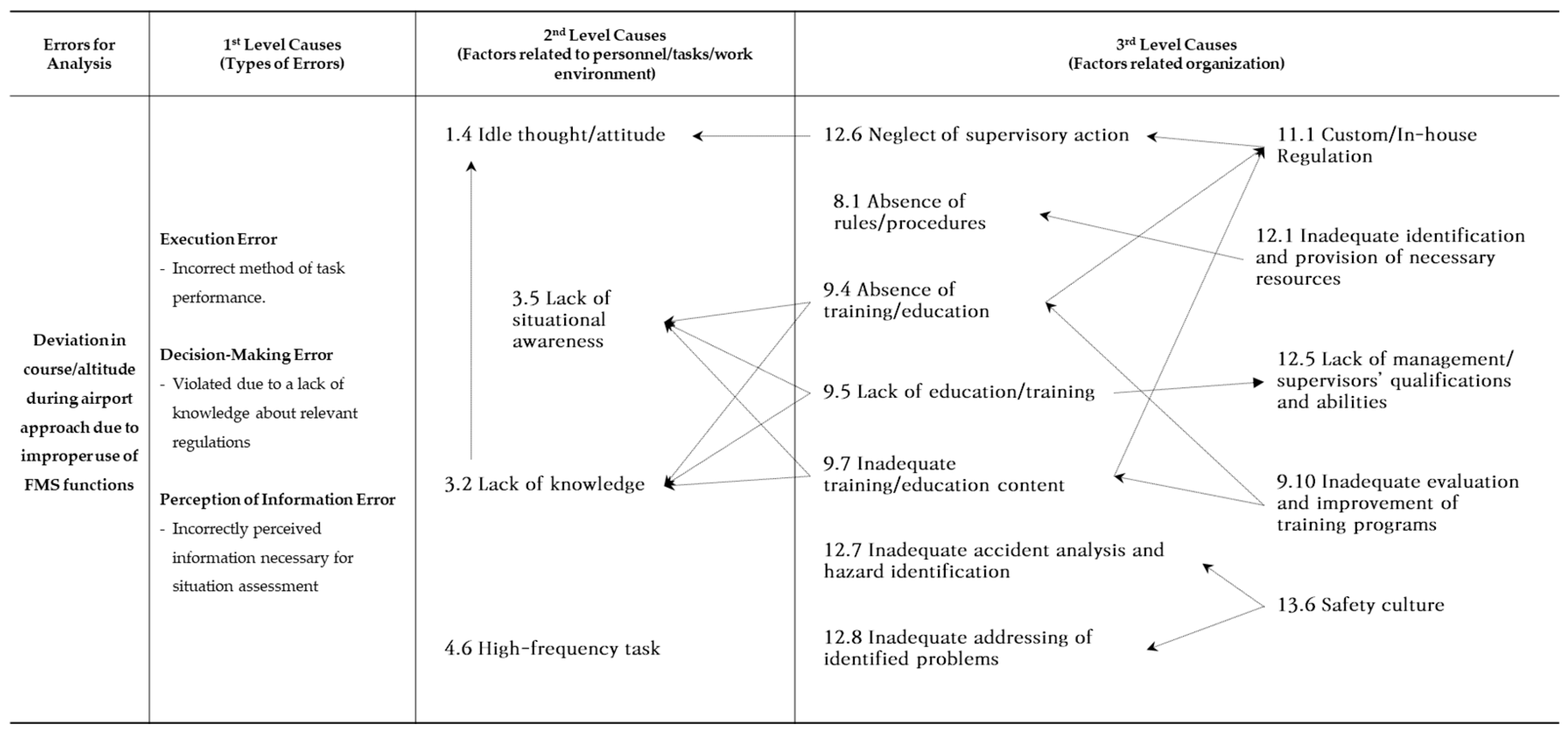
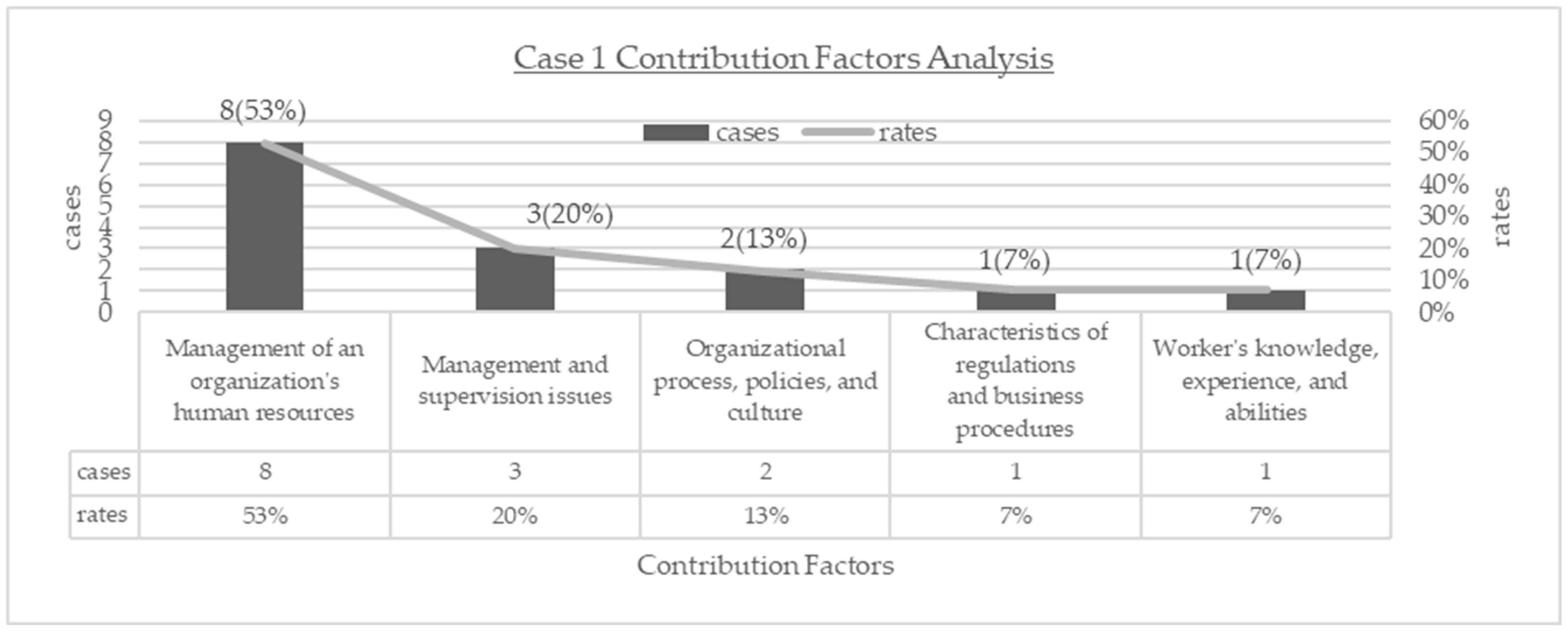


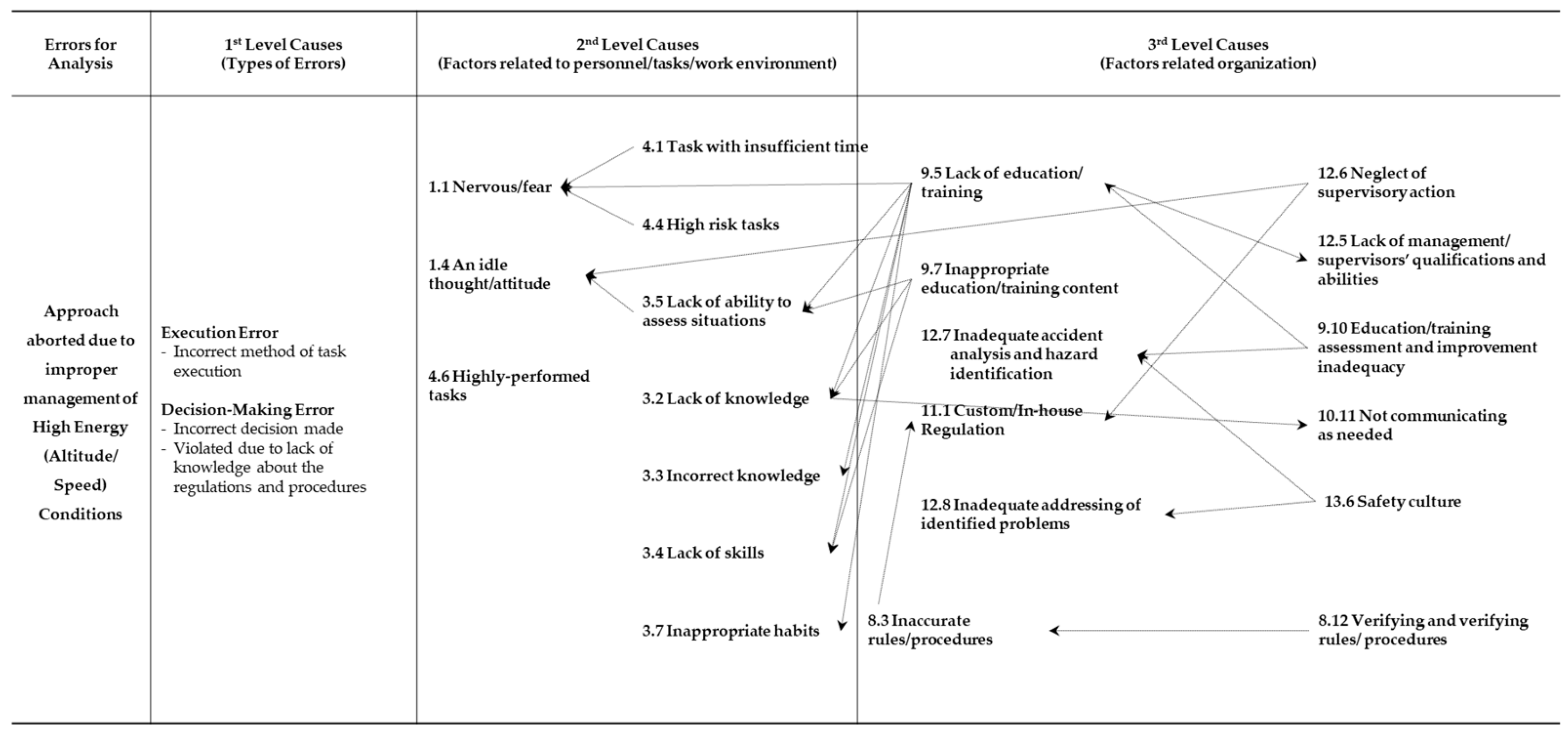
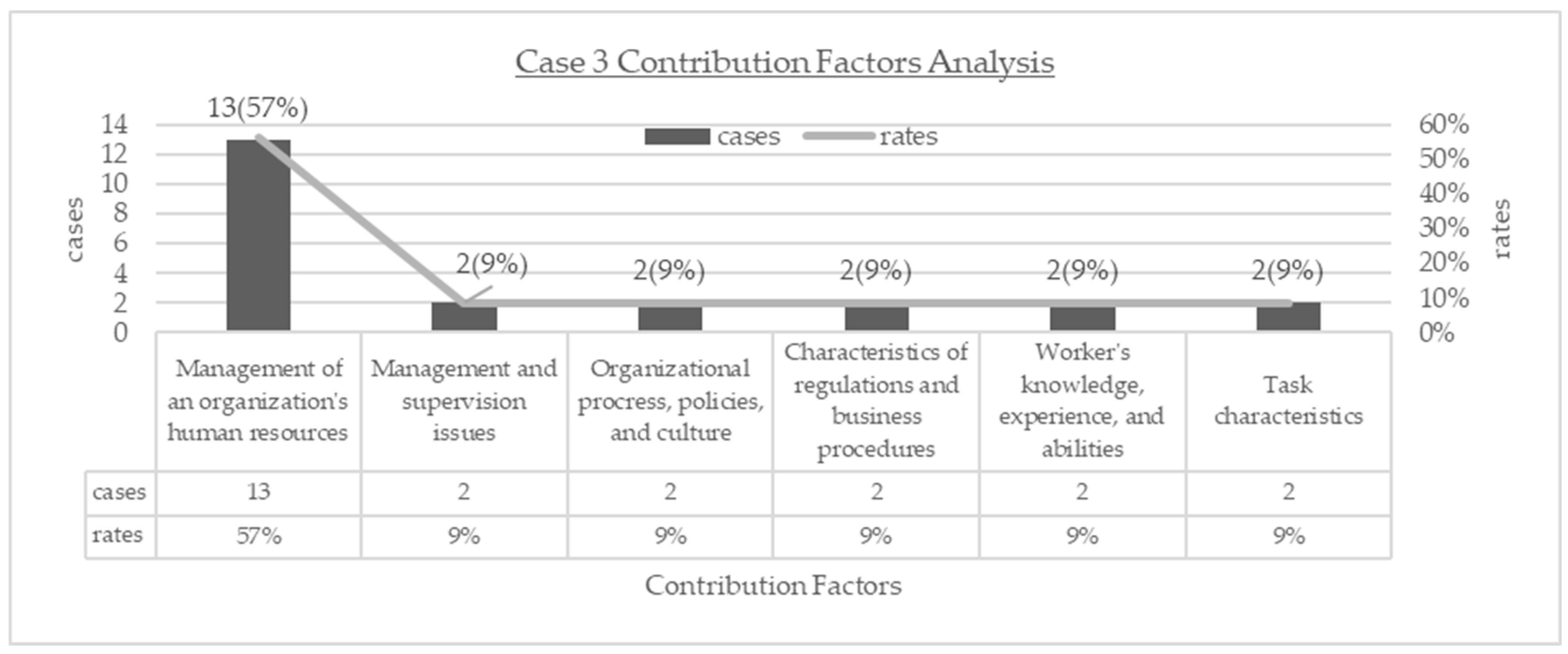

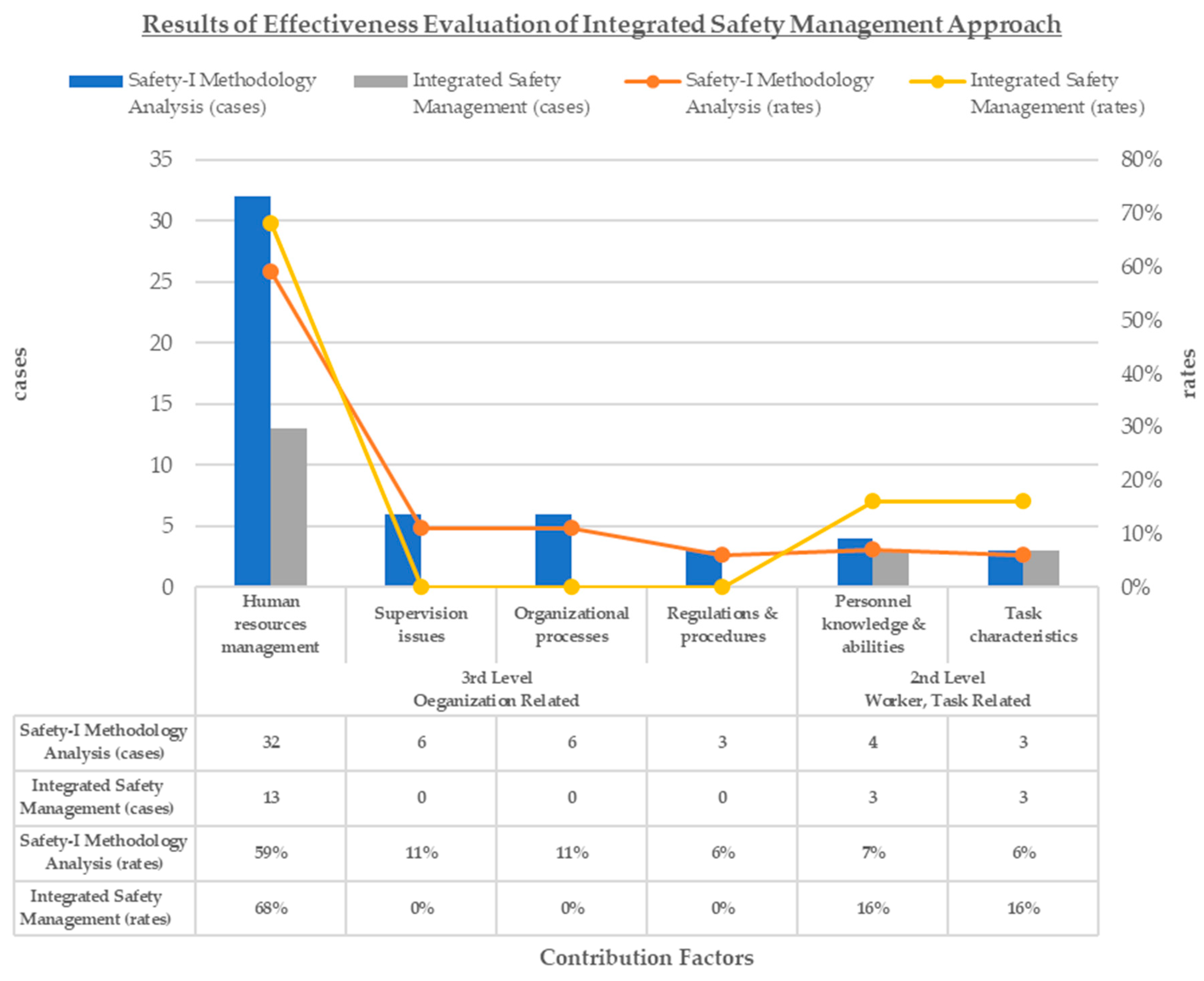

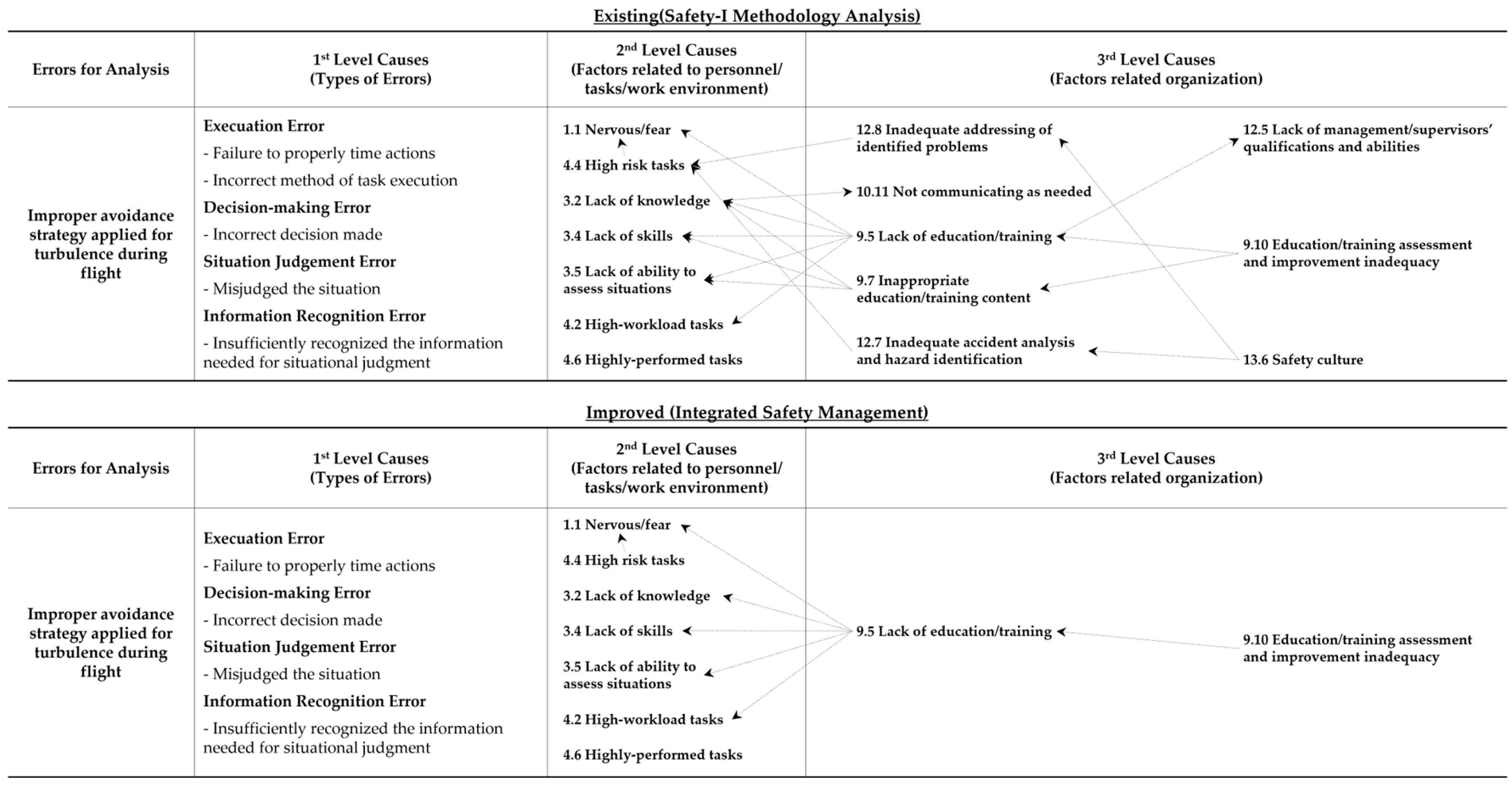
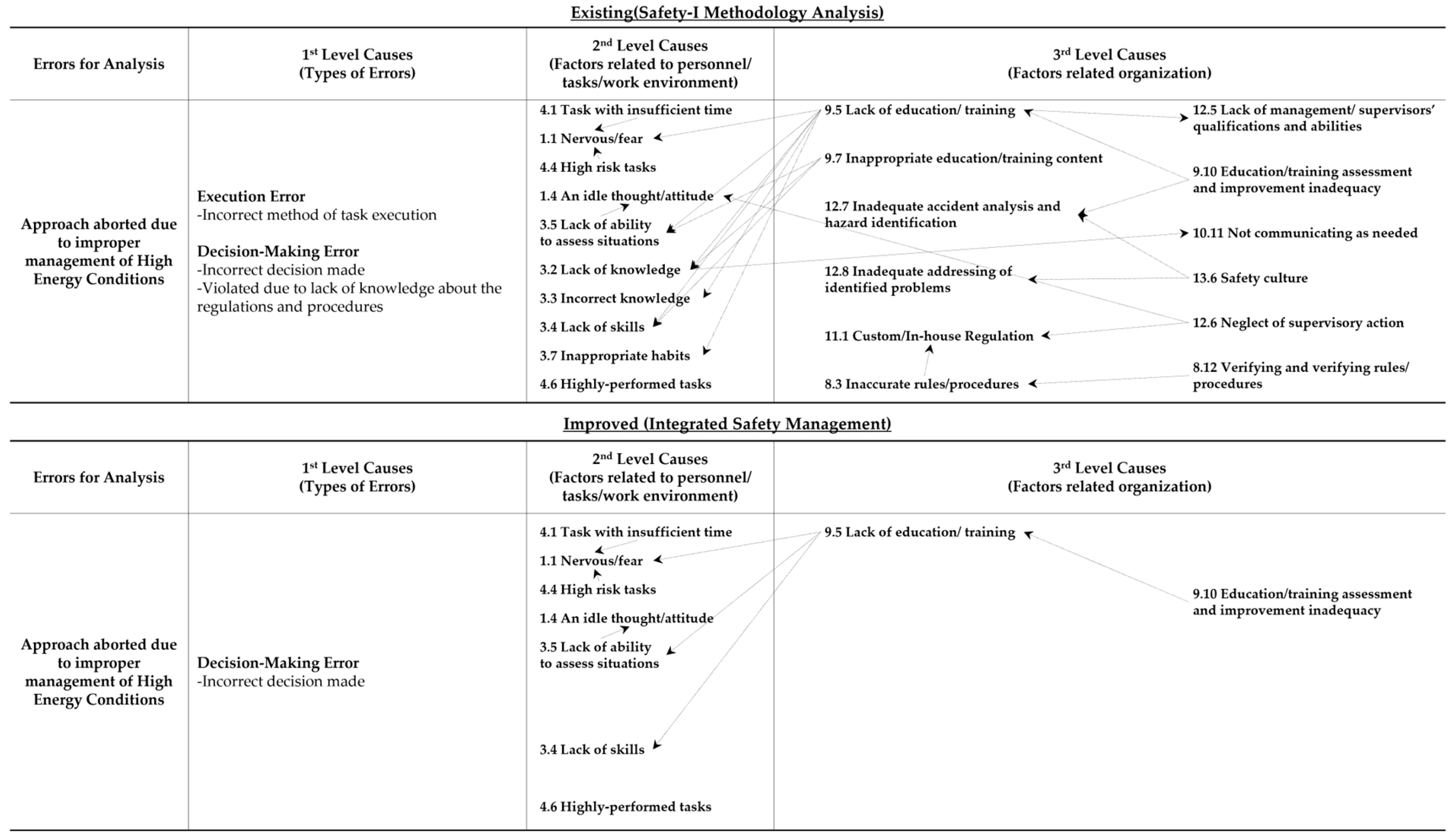
| Key Elements | Safety-I Application | Safety-II Application | Integration Effects |
|---|---|---|---|
| Analysis Method | HEAR framework | LPAC model, PAM framework | Systematic failure analysis and resilience enhancement |
| Primary Focus | Root cause identification | Adaptation strategy development | Comprehensive safety management approach |
| Implementation Tools | Why–Because Tree | Resilient behavior definition | Practical application guidelines |
| Expected Effects | Failure prevention | Success expansion | Sustainable safety improvement |
| Level | Category | Subcategories | Focus Areas |
|---|---|---|---|
| Level 1 | Direct errors | Information recognition errors, decision-making errors, execution errors | Immediate manifestation of system failures |
| Level 2 | Personnel/task factors | Worker knowledge/experience/abilities, task characteristics | Individual and task-related contributing factors |
| Level 3 | Organizational factors | Regulations and procedures, human resource management, management and supervision, organizational culture | Systematic organizational deficiencies |
| Component | Definition | Key Activities | Implementation Focus |
|---|---|---|---|
| Learn | Knowledge acquisition and experience sharing | Apply previous learning, debrief experiences, seek knowledge, share knowledge | Individual and organizational learning integration |
| Plan | Proactive scenario development | Develop “what if” scenarios, discuss expected actions, establish countermeasures | Reactive to anticipatory response transformation |
| Adapt | Real-time response capabilities | Address unanticipated pressures, adjust communication, change systems, manage workload | Rigid to flexible operational requirement resolution |
| Coordinate | Effective communication and teamwork | Affirm information, ask for assistance, cross-check actions, monitor status | Individual to team-based safety management |
| Element | Definition | Analysis Focus | Coordination Function |
|---|---|---|---|
| Pressure | External demands and internal efficiency requirements | Demand pressure, efficiency pressure, conflicting pressure | Implementation challenge identification |
| Adaptations | System response mechanisms | HEAR organizational improvements, LPAC adaptive capabilities | Safety-I and Safety-II coordination |
| Manifestations | Actual system responses | Prevention maintenance, crisis recovery, range expansion | Implementation effectiveness evaluation |
| Case | Type | Operational Aspect | Specific Phenomenon | Main Organizational Issues |
|---|---|---|---|---|
| Case 1 | FMS operation related | Technical | Path/altitude deviation | Inadequate FMS function education, limited safety manager analytical capabilities |
| Case 2 | Turbulence related | Environmental | Crew injury | Insufficient adverse weather response education, traditional safety management persistence |
| Case 3 | Energy management related | Managerial | Approach abort | Inappropriate energy management education, traditional approach persistence |
| Phase | Method | Framework Applied | Analytical Focus | Expected Outcomes |
|---|---|---|---|---|
| Phase 1 | HEAR coding analysis | HEAR framework | Systematic coding using a structured template across three levels (direct errors, personnel/task factors, and organizational factors) | Individual case factor identification and Excel-based categorization |
| Phase 2 | Cross-case pattern recognition | HEAR framework | Comparative analysis of recurring categorical patterns across all three cases | Common organizational deficiency patterns and implementation challenges |
| Phase 3 | Resilient behavior development | LPAC model (AA LIT CodeBook) | Iterative review across LPAC categories (learn, plan, adapt, coordinate) for each case | Case-specific resilient behavior guidelines and behavioral frameworks |
| Phase 4 | Integration coordination | PAM framework | Deductive mapping of operational pressures, resource constraints, and decision-making processes | Linkages between organizational factors and adaptive responses with effectiveness validation |
| Category | Case 1 | Case 2 | Case 3 |
|---|---|---|---|
| Case Type | FMS operation related | Turbulence related | Energy management related |
| Occurrence Phase | Instrument approach phase | Climb phase | Instrument phase |
| Specific Phenomenon | Path/altitude deviation | Crew injury | Approach abort |
| Detailed Situation | Case 1-1: safety altitude violation Case 1-2: approach path deviation | Altitude 16,700 feet during climb, encountered turbulence resulting in cabin crew left ankle fracture | High energy state 1 continuation resulting in unstable approach and landing abort |
| Main Cause | Inadequate FMS function education, inappropriate manual input procedures | Inadequate turbulence avoidance strategy formulation/execution | Inappropriate energy management strategy |
| Education/Training Related Elements | Inadequate FMS operation principle education system | Insufficient adverse weather response education | Inappropriate energy management education system |
| Organizational Related Elements | Limited systematic analysis capabilities | Habitually repeating conventional safety education | Adherence to traditional navigation methods Traditional approach persistence |
| Flight Phase | Event Status (Change in System Status) | Captain (CAPT) | First Officer (FO) | Air Traffic Controller (ATC) |
|---|---|---|---|---|
| FMS Set up | Refer to information from D-ATIS and enter landing runway and instrument approach procedure type into FMS. | Ordered FO to set up FMS for STAR (LENDY 8 ARR) & IAP (ILS13L) | Due to mismatch between endpoint of STAR and start point of IAP, it was not automatically entered into FMS. FO attempted to insert KMCHI and BUZON waypoints manually, and KMCHI altitude constraint value of 2,900 FT was additionally entered. However, BUZON altitude constraint of 2,900 FT input was missed. | |
| Approach Briefing | Conduct approach briefings based on checklists. | Checked and briefed information entered in FMS, including altitude constraint of manually entered point, but did not identify that altitude constraint was not entered. | ||
| Descent | Controller instructed to head to KMCHI, one of IAFs, and to proceed with instrument approach clearance issued by KMCHI. | Direct to KMCHI, Descant to 2900 FT. Cleared ILS 13L | ||
| Use FMS’s Direct function to enter route to KMCHI | Ordered to FO "Direct to KMCHI" | Using FMS function key DCT, set course towards KMCHI. | ||
| Initial Approach Segment | Leaving at KMCHI and commence instrument approach | Maintained altitude of 2900 FT and reached KMCHI, referring to altitude displayed on the ND (Navigation Display). Start descent from KMCHI to BUZON from 2900 FT to 1900 FT. | ||
| ATC alerts aircraft that it has descended below safe altitude | Climb and Maintain 2900 FT until BUZON. Follow Published Procedure | |||
| Climb above safe altitude | Climbed above safe altitude per ATC’s instruction. (Pilots did not recognize aircraft had descended below safe altitude before ATC corrected situation.) | Read-back of ATC instruction | ||
| Final Approach Segment | Landing | Landed after entering published approach path. |
| Flight Phase | Event Status (Change in System Status) | Captain (CAPT) | First Officer (FO) | Air Traffic Controller (ATC) |
|---|---|---|---|---|
| FMS Set up | Refer to information from D-ATIS and enter landing runway and instrument approach procedure type into FMS. | Instructed FO to input STAR (XAC 1K ARR) IAP (ILS Y 34L) into FMS. | Input STAR and IAP into FMS. | |
| Approach Briefing | Conduct approach briefings based on checklists. | Conducted briefing based on approach procedure type set in FMS and relevant information confirmed. | ||
| Descent | Delays in assigning runway and approach procedure type due to changes in weather conditions and increased traffic. | Instructed FO to confirm runway and approach procedure type with air traffic control. | Reconfirmed runway and approach procedure with air traffic control. | Conveyed that runway and approach procedure type have not been determined. |
| Following air traffic control instructions for path adjustment and altitude descent for landing and for traffic separation. | Adjust aircraft’s trajectory according to air traffic control’s instructions. | |||
| Runway and approach procedure type set in FMS have been changed. | Instructed FO to change FMS settings. | Due to mismatch between endpoint of STAR at KAHIO and starting point of IAP which were not automatically entered into FMS, three omitted waypoints (STEAM, SWEET, SNAKE) were manually inputted. Additionally, waypoint SMILE, which was automatically selected by FMS, was determined to be incorrect and replaced with NYLON. | Direct to STEAM, Descend to 3000 Ft, Speed ILS RWY 34L | |
| Initial Approach Segment | Confirm FMS setting changes. | While confirming changes made to FMS settings, discrepancy with approach chart was discovered. Attempts were made to manually adjust it, but it remained unresolved as aircraft passed SNAKE point. | ||
| Air traffic control recognized that aircraft has deviated from its course. | Recovered to final approach course according to air traffic control instructions. | Air traffic controller, noticing deviation from course, guided aircraft back to final approach path. | ||
| Final Approach Segment | Landing | Entered normal approach path and landed. |
| Time | Event Status (Change in System Status) | Captain (CAPT) | Purser | (Injured) Flight Attendant | Passenger Wanting to Use Lavatory |
|---|---|---|---|---|---|
| (Est 07:00:00) | Joint Briefing | Shared departure/arrival airport weather and turbulence-related information with crew. | |||
| 07:55:11 | Depart from origin airport. | ||||
| (Est 08:00:00) | Around 10,000 FT during climb | Kept the seatbelt sign on due to observed precipitation and turbulence, communicated to the purser via intercom. | |||
| (Est 08:02:00) | Passenger attempts to use the lavatory. | Advised passenger to remain seated due to turbulence while moving around aircraft. | Inquired with cabin crew about lavatory availability. | ||
| 08:07:43 | Cockpit weather radar identifies cloud formations. | Decided to climb to avoid cloud formation. While maintaining FL160, requested ACC for climb to FL260. | While attempting to unfasten seatbelt to check on passenger using lavatory, seatbelt sign chimed twice. During turbulence, lost balance, attempted to follow turbulence procedures, but twisted ankle. Subsequent turbulence caused body to jerk upward, placing weight on ankle and resulting in fall to floor. | ||
| (Est 08:07:50) | Flight Attendant moves to lavatory area to check on passenger. | ||||
| 08:07:57 | Seatbelt sign chimed twice | Anticipated turbulence and activated seatbelt sign twice. | Made passenger announcement to prepare for turbulence. | ||
| 08:08:21 | Turbulence occurs. | ||||
| 08:15:00 | Crew member’s injury acknowledged and reported to relevant departments. | After turbulence subsided, reported to Captain about crew member’s injury caused by turbulence and provided update on injured crew member’s condition. | Passenger returned to seat. | ||
| Condition of injured crew member and her position reported to sub-center using company communication network, and request for follow-up action made. |
| Flight Phase | Event Status (Change in System Status) | Air Traffic Controller (ATC) | Captain (CAPT) | First Officer (FO) |
|---|---|---|---|---|
| Cruise | Pilot requests ATC for altitude descent from calculated Top of Descent (TOD). | Descent FL160 reach by OLMEN. | Request Descent | ICN CTL, XXX, REQUEST DESCENT |
| Descent (Idle Segment) | Complete altitude descent to FL160 before reaching OLMEN by 5 NM, and reduce speed to 250 KIAS. | |||
| ATC instructs the pilot to short cut the route. | OLMEN direct ENFIL | OLMEN direct ENPIL | FMS set OLMEN-ENPIL | |
| Descent (Geometric Segment | Due to route short cut, aircraft’s energy (altitude) increases. | Descent 13,000 FT | Begin descent to 13,000 FT, mentally calculated distance to ENFIL considering headwind/tailwind conditions. | |
| Pilot requests further descent after reaching assigned altitude, but denied due to airspace restrictions. | Unable. Maintain 13,000 FT due to Airspace restriction. | Request further descent. | SEL APP, XXX, Request further descent | |
| Pilot initiates speed reduction to decrease aircraft’s energy. | Descent 10,000 FT | DES 10,000 FT/Reduce speed to 210 KIAS during the descent. | ||
| ATC instructs pilot to maintain high speed, considering spacing between aircraft ahead and behind. | Speed Maintain 280 KIAS until 10,000 FT, and Reduce 250 KIAS until ENPIL. You are #1 traffic. | |||
| Pilot requested speed reduction, but ATC instructed to maintain highspeed considering separation. | Maintain Speed 250 KIAS below 10,000 FT | Request Normal Speed | Request Normal Speed | |
| Pilot received instructions to descend to 7000 FT at initial approach fix (IAF) and maintain a speed higher than normal approach speed. | Descend 7000 FT Cleared ILS 33R approach, Maintain 230 KIAS until ENPIL | Descend 7000 FT, Speed Maintain 230 KIAS | Descend 7000 FT. Cleared ILS 33R approach. Maintain 230 KIAS until ENPIL | |
| Approach Segment | Pilot maintained 7000 FT and 230 KIAS until reaching the initial approach to (IAP) at which point deceleration and descent began for instrument approach. | Used speed brakes to reduce aircraft energy, but deceleration and descent were not sufficient. | ||
| Aircraft did not configure for landing prior to reaching final approach point (FAP), necessitating a go-around. |
| Causes and Contributing Factors | Cases | Rates (%) | |||||||
|---|---|---|---|---|---|---|---|---|---|
| C1 | C2 | C3 | Total | C1 | C2 | C3 | Total | ||
| 2nd Level: Personnel and Task Related | Personnel Knowledge and Experience | 6.7 | 6.3 | 8.6 | 7.4 | ||||
| - Insufficient knowledge | 0 | 1 | 1 | 2 | |||||
| - Limited assessment ability | 1 | 0 | 1 | 2 | |||||
| Task Characteristics | 0.0 | 6.3 | 8.6 | 5.6 | |||||
| - Insufficient time | 0 | 0 | 1 | 1 | |||||
| - High-risk tasks | 0 | 1 | 1 | 2 | |||||
| 3rd Level: Organization Related | Regulations and Procedures | 6.7 | 0.0 | 8.6 | 5.6 | ||||
| - Absence/inaccurate procedures | 1 | 0 | 2 | 3 | |||||
| Human Resources Management | 53.4 | 68.8 | 56.5 | 59.3 | |||||
| - Absence of training | 3 | 0 | 0 | 3 | |||||
| - Inadequate education | 1 | 6 | 7 | 14 | |||||
| - Inadequate content | 3 | 3 | 4 | 10 | |||||
| - Inadequate evaluation | 1 | 2 | 2 | 5 | |||||
| Management and Supervision | 20.0 | 6.3 | 8.7 | 11.1 | |||||
| - Resource provision issues | 1 | 0 | 0 | 1 | |||||
| - Supervisory neglect | 2 | 0 | 2 | 4 | |||||
| - Inadequate analysis | 0 | 1 | 0 | 1 | |||||
| Organizational Culture | 13.3 | 12.5 | 8.7 | 11.0 | |||||
| - Safety culture issues | 2 | 2 | 2 | 6 | |||||
| Total | 15 | 16 | 23 | 54 | 100 | 100 | 100 | 100 | |
| Case | Safety Management Department Response | Safety-I Methodology Analysis Results |
|---|---|---|
| Case 1: FMS Operation | Surface-level solutions emphasizing procedural compliance and individual behavior modification | Systematic organizational deficiencies in training systems and safety manager analytical capabilities |
| Case 2: Turbulence | Conventional safety emphasis focusing on crew procedures and weather information utilization | Educational inadequacies in practical weather analysis and persistent ineffective safety management approaches |
| Case 3: Energy Management | Traditional approach reinforcement with emphasis on standard procedure adherence | Organizational resistance to systematic FMS utilization and inadequate principle-based education |
| Cross-Case Pattern | Reactive individual-focused interventions targeting 13% of contributing factors | Systematic organizational improvements required for 87% of contributing factors |
| Category | FMS Operation | Turbulence Response | Energy Management |
|---|---|---|---|
| Resilient Behavior Definition | FMS principle understanding-based quick/accurate response during instrument approach procedure changes | Weather information analysis and system utilization-based turbulence avoidance response | FMS-based energy state monitoring and appropriate management |
| Key Systems | FMS database Instrument approach procedures | Weather radar Weather information systems | FMS-based energy management Air traffic flow management |
| Pressure Factors | STAR/IAP mismatch Late runway change Time constraints | Forecasted turbulence Passenger safety requirements Schedule adherence pressure | ATC instructions Airspace restrictions Traffic flow |
| Learn | FMS principle and function understanding Approach procedure change experience sharing | Weather phenomenon understanding Weather data analysis capability enhancement | Energy management principle knowledge FMS-based energy management |
| Plan | Runway/approach procedure change preparation Alternative procedure discussion | Avoidance strategy pre-establishment Cabin safety measure planning | Energy management strategy establishment FMS profile optimization |
| Adapt | Quick FMS reconfiguration ATC cooperation request | Real-time weather assessment Vertical/horizontal avoidance | FMS-based energy adjustment Aircraft configuration optimization |
| Coordinate | Flight crew intention sharing ATC communication | Cabin crew safety measure coordination ATC information sharing | Energy state continuous sharing Additional distance/altitude request if needed |
| Flight Crew’s Resilient Behavior Definition | ||
|---|---|---|
| The repetitive capability to accurately and quickly reconfigure FMS in adverse situations such as setting/changing instrument approach procedures or late runway changes, based on effective learning and high-level understanding of FMS principles | ||
| Operational System to be studied | System Boundaries:
Key System Components: | |
| System Demand and Efficiency Pressure | Demand Pressures:
Efficiency Pressures:
Conflicting Pressures:
| |
| LPAC Framework Implementation | ||
LEARN (Knowledge Accumulation):
| PLAN (Proactive Preparation):
| |
ADAPT (Real-time Flexibility):
| COORDINATE (Collaborative Actions):
| |
| Manifestations of Operational Resilience | Five Patterns of Resilience Manifestations:
| |
| Key Elements | Safety-I Application | Safety-II Application | Integration Effects |
|---|---|---|---|
| Analysis Method | HEAR Framework systematic organizational analysis | LPAC/PAM behavioral and coordination frameworks | Comprehensive failure analysis and resilience enhancement |
| Primary Focus | Root cause identification and organizational improvements | Adaptation strategy development and behavioral capabilities | Holistic safety management approach |
| Implementation Tools | Why–Because Tree analysis and organizational categorization | Resilient behavior definition and coordination mapping | Practical application guidelines with measurable outcomes |
| Expected Effects | Systematic organizational improvements addressing predominant factors | Adaptive capability development for operational excellence | Sustainable safety transformation |
| Causes | Contribution Factors | Existing (Safety-I Methodology Analysis) | Improved (Integrated Safety Management) | ||||||
| Count (n) | Count (n) | ||||||||
| C1 | C2 | C3 | Total | C1 | C2 | C3 | Total | ||
| 2nd Level Personnel, Task Related | Personnel’s knowledge, experience, abilities | 1 | 1 | 2 | 4 | 1 | 0 | 2 | 3 |
| Task characteristics | 0 | 1 | 2 | 3 | 0 | 1 | 2 | 3 | |
| 3rd Level Organization Related | Characteristics of regulations and business procedures | 1 | 0 | 2 | 3 | 0 | 0 | 0 | 0 |
| Management of an organization’s human resources | 8 | 11 | 13 | 32 | 4 | 5 | 4 | 13 | |
| Management and supervision issues | 3 | 1 | 2 | 6 | 0 | 0 | 0 | 0 | |
| Organizational processes, policies, and culture | 2 | 2 | 2 | 6 | 0 | 0 | 0 | 0 | |
| Total | 15 | 16 | 23 | 54 | 5 | 6 | 8 | 19 | |
| Causes | Contribution Factors | Existing (Safety-I Methodology Analysis) | Improved (Integrated Safety Management) | ||||||
| Rates (%) | Rates (%) | ||||||||
| C1 | C2 | C3 | Total | C1 | C2 | C3 | Total | ||
| 2nd Level Personnel, Task Related | Personnel’s knowledge, experience, abilities | 6.7 | 6.3 | 8.7 | 7.4 | 20.0 | 0.0 | 25.0 | 15.8 |
| Task characteristics | 0.0 | 6.3 | 8.7 | 5.6 | 0.0 | 16.7 | 25.0 | 15.8 | |
| 3rd Level Organization Related | Characteristics of regulations and business procedures | 6.7 | 0.0 | 8.7 | 5.6 | 0.0 | 0.0 | 0.0 | 0.0 |
| Management of an organization’s human resources | 53.3 | 68.8 | 56.5 | 59.3 | 80.0 | 83.3 | 50.0 | 68.4 | |
| Management and supervision issues | 20.0 | 6.3 | 8.7 | 11.1 | 0.0 | 0.0 | 0.0 | 0.0 | |
| Organizational processes, policies, and culture | 13.3 | 12.5 | 8.7 | 11.1 | 0.0 | 0.0 | 0.0 | 0.0 | |
| Total | 100 | 100 | 100 | 100 | 100 | 100 | 100 | 100 | |
Disclaimer/Publisher’s Note: The statements, opinions and data contained in all publications are solely those of the individual author(s) and contributor(s) and not of MDPI and/or the editor(s). MDPI and/or the editor(s) disclaim responsibility for any injury to people or property resulting from any ideas, methods, instructions or products referred to in the content. |
© 2025 by the authors. Licensee MDPI, Basel, Switzerland. This article is an open access article distributed under the terms and conditions of the Creative Commons Attribution (CC BY) license (https://creativecommons.org/licenses/by/4.0/).
Share and Cite
No, H.W.; Cha, W.C. An Integrated Framework for Implementing Safety-I and Safety-II Principles in Aviation Safety Management. Safety 2025, 11, 56. https://doi.org/10.3390/safety11020056
No HW, Cha WC. An Integrated Framework for Implementing Safety-I and Safety-II Principles in Aviation Safety Management. Safety. 2025; 11(2):56. https://doi.org/10.3390/safety11020056
Chicago/Turabian StyleNo, Hyun Woo, and Woo Chang Cha. 2025. "An Integrated Framework for Implementing Safety-I and Safety-II Principles in Aviation Safety Management" Safety 11, no. 2: 56. https://doi.org/10.3390/safety11020056
APA StyleNo, H. W., & Cha, W. C. (2025). An Integrated Framework for Implementing Safety-I and Safety-II Principles in Aviation Safety Management. Safety, 11(2), 56. https://doi.org/10.3390/safety11020056






